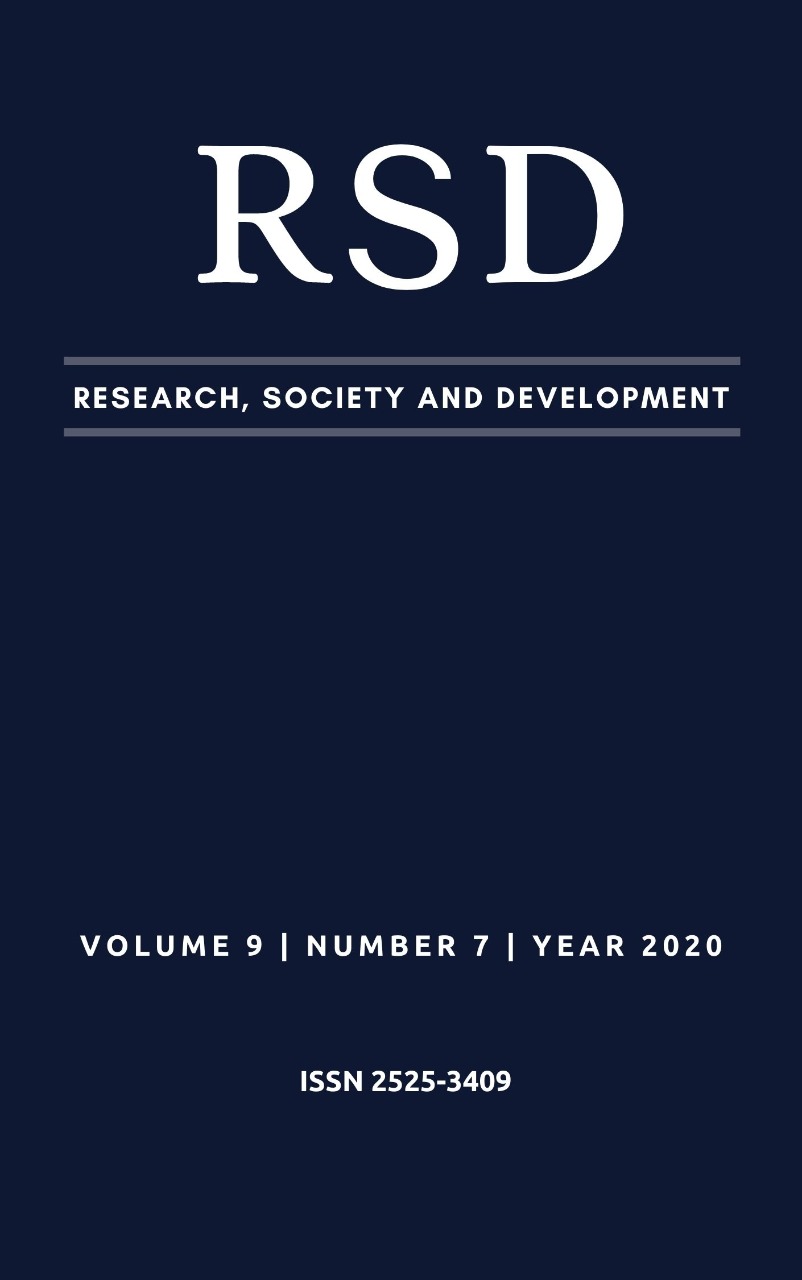Structural health monitoring of a rotor using continuous learning artificial immune systems algorithms
DOI:
https://doi.org/10.33448/rsd-v9i7.3546Keywords:
Structural integrity monitoring, Rotor, Artificial immune systems, Negative selection algorithm, Clonal selection algorithm.Abstract
The work proposes a methodology for the development of structural integrity monitoring based on intelligent computation techniques, with the purpose of detecting structural faults in a rotor using the technique of artificial negative and clonal selection immune systems. The method makes it possible to compose the diagnostic system able to learn continuously, covering two situations of damage, without the need to restart the learning process. The negative selection algorithm is responsible for the pattern recognition process and the clonal selection algorithm is responsible for the continuous learning process. To evaluate the methodology, an experimental bench was set up that produces a signal which, from which captured and treated, can be identified, classified and even defined the prognosis of the test behavior. The results demonstrate robustness and precision of the proposed methodology.
References
Bradley, D. W & Tyrrel, A. M. (2002) Immunotronics - novel finite-state-machine architectures with built-in self-test using self-nonself differentiation. IEEE Transactions on Evolutionary Computation, New York, v. 6, p. 227-238.
De Castro, L. N. & Timmis, J. (2003). Artificial Immune Systems as a Novel Soft Computing Paradigm. Soft Computing Journal. Springer Velag, p. 526- 544, 2003.
De Castro, L. N. & Timmis, J. (2002). Artificial immune systems: a new computational intelligence approach, New York: Springer, p.357.
Farrar, C. R.; Lieven, N. A.; Bement, M. T. An introduction to damage prognosis. In: Inman, D. J. Farrar, C. J, Lopes Jr, V. & Steen Jr, V. (2005). Damage prognosis for aerospace, civil and mechanical systems. England: John & Sons, p. 1-12.
Gonsalez, C. G., Da Silva, S., Brennan, M. J. & Lopes Jr, V. (2014). Structural damage detection in an aeronautical panel using analysis of variance. Mechanical Systems and Signal Processing, v. 52-53, p. 206-216, DOI 10.1016/j.ymssp.2014.04.015.
Hall, S. R. (1999). The effective management and use of structural health data. In. International Workshop on Structural Health Monitoring, 1999, New York. Proceedings […] New York: Virginia Tech Publisher, p. 265-275.
Jungwon, K., Bentley, P. J., Aickelin, U., Greensmith, J., Tedesco, G. & Twycross, J. (2007). Immune system approaches to intrusion detection – a review. Nature Computing, Springer, p. 413-466.
Kramer, E. (1993). Dynamics of Rotors and Foundations, Berlin, Springer-Verlag, p. 377.
Lee, C.W. (1993). Vibration Analysis of Rotors, Waterloo, Springer Science, p.323.
Lima, F. P. A.; Lopes, M. L. M.; Lotufo, A. D. P. & Minussi, C. R. (2016). An artificial immune system with continuous-learning for voltage disturbance diagnosis in electrical distribution systems. Expert Systems with Applications, p. 131-142 DOI 10.1016/j.eswa.2016.03.010.
Lima, F. P. A., Chavarette, F. R., Souza, A. S. E., Souza, S. S. F. & Lopes, M. L. M. (2013). Artificial immune systems with negative selection applied to health monitoring of aeronautical structures. Advanced Materials Research, Hong King, v.871, s/n, p.283-289.
Lima, F. P. A. (2016). Diagnóstico de distúrbios de tensão em sistemas de distribuição baseado num sistema imunológico artificial com aprendizado continuado. 2016. 101 f. Tese (Doutorado Engenharia Elétrica) – Faculdade de Engenharia, Universidade Estadual Paulista, Ilha Solteira.
Muszynska, A. (2005). Rotordynamics, Boca Raton, CRC Press, p.1085.
Oliveira, D. C; Chavarette, F. R & Lopes, M. L. M. (2019). Damage Diagnosis in na Isotropic Structure Using an Artificial Immune System Algorithm. Journal of the Brazilian Society of Mechanical Sciences and Engineering, DOI 10.1007/s40430-019-1971-9.
Outa, R. & Chavarette, F. R. (2018). Application of Non-Linear Control Under a Dynamic Rotor Signal. International Journal of Recent Scientific Research, v. 9, p. 24150-24157.
Pereira, A.S. et al. (2018). Metodologia do trabalho científico. [e-Book]. Santa Maria. Ed. UAB / NTE / UFSM. Available at: https://repositorio.ufsm.br/bitstream/handle/1/15824/Lic_Computacao_Metodologia-Pesquisa-Cientifica.pdf?sequence=1. Accessed on: April 21th, 2020.
Wang, L. & Gao, R.X. (2006). Condition Monitoring and Control for Intelligent Manufacturing, London, Springer-Verlag, p.410.
Werbinska-Wojciechowska, S. (2019). Technical System Maintenance: Delay-Time-Based Modelling, Switzerland, Springer Nature, p.361.
Wylie, C. S. & Shakhnovich, E. I. (2012). Mutation induced extinction infinite populations: lethal mutagenesis and lethal isolation. PLoS Computational Biology, New York, v. 8, p. 1-6.
Zhou, Z., Wang, H. & Lou, P. (2010). Manufacturing Intelligence for Industrial Engineering: Methods for System Self-Organization, Learning, and Adaptation, Hershey, IGI Global, p.406.
Downloads
Published
Issue
Section
License
Authors who publish with this journal agree to the following terms:
1) Authors retain copyright and grant the journal right of first publication with the work simultaneously licensed under a Creative Commons Attribution License that allows others to share the work with an acknowledgement of the work's authorship and initial publication in this journal.
2) Authors are able to enter into separate, additional contractual arrangements for the non-exclusive distribution of the journal's published version of the work (e.g., post it to an institutional repository or publish it in a book), with an acknowledgement of its initial publication in this journal.
3) Authors are permitted and encouraged to post their work online (e.g., in institutional repositories or on their website) prior to and during the submission process, as it can lead to productive exchanges, as well as earlier and greater citation of published work.


